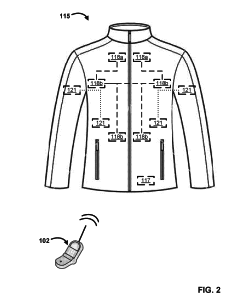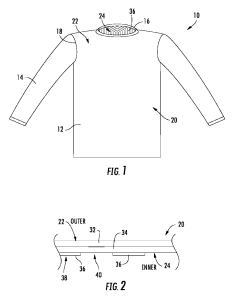Trademark Evolution: Part 2 (When Technology Changes)
By Richard Stobbe
Technology certainly evolves. Can a trademark evolve? In the world of intellectual property rights, a registered trademark can live on for a hundred years or more. If you registered a trademark in the 1800s, it could still be valid today. But will the underlying product be delivered to customers the same way? (See: Goodbye Floppy Disk, Hello Streaming Video: Trademark Evolution, Part 2).
- In the 1980s Canadian courts recognized that service delivery can evolve in the decision in BMB Compuscience Canada Ltd v Bramalea Ltd. (1988), 22 CPR (3d) 561 (FCTD). In that case, BMB applied to register the mark NETMAIL in association with a computer program. But the NETMAIL product was not sold as a physical object, and courts have recognized that software vendors can experience “unique difficulties†when attempting to associate a trade-mark with its software, since there is no label, packaging or hang-tag, as with other types of goods. The court in BMB Compuscience was prepared to take a flexible approach and permit a software vendor like BMB to demonstrate “use†of its mark for the purposes of the Trade-marks Act where the brand was shown on a computer screen during product demonstrations.
- This concept was more recently applied in Davis LLP vs. 819805 Alberta Ltd., 2016 TMOB 64, a Section 45 challenge to the registered trademark BIBLIOTECA. The mark BIBLIOTECA was registered in association with certain software “goodsâ€. The goods were described as “Computer software, namely a computer database containing information for use in the field of building design and construction.â€Â During the relevant period, the database was accessed by customers as part of an online service, without the sale of any tangible or physical product. The BIBLIOTECA decision adopted the reasoning in BMB Compuscience to allow the trademark owner to demonstrate “use†of the mark in ways that reflected technological changes in the way this product was delivered to customers.
- In the United States, the USPTO is running a pilot program to allow amendments to identifications of goods and services in trademark registrations due to changes in technology, including many cases where floppy disks and cartridges are being updated to reflect online streaming. For example, the mark PHOTODISC, owned by Getty Images, was originally registered in association with stock photography “contained in digital format on CD-ROMs.â€Â Through the amendment process, Getty Images is proposing an amendment to reflect the changes in how its stock photo products are delivered: “in digital format on electronic or computer media or downloadable from databases or other facilities provided over global computer networks, wide area networks, local area networks, or wireless networks…â€
- Perhaps the best reflection of this is the US registered mark for THE MARCH OF TIME, used in association with newsreels and originally registered in 1935. Embedded in the original trademark application is a description of the technological breakthrough of allowing motion pictures to be broadcast with sound: “motion picture films for use in connection with synchronized apparatus for simultaneously reproducing coordinated light and sound effect.â€Sadly, this piece of history is now being replaced with the bland description “Providing non-downloadable online videos featuring historical newsreel.†I guess that evokes the march of time !
Calgary – 07:00 MST
No commentsIP Protection in the Fashion and Apparel Industry (Part 1)
.
By Richard Stobbe
Complex technology like blockchain is in fashion. What about IP protection for seemingly simple items like shirts, shoes and undergarments? As competitors jostle for position in the fashion and apparel marketplace, how do intellectual property rights apply? Make no mistake, IP rights in the fashion and apparel industry are fiercely contested. Fashion products can be protected in Canada using a number of different IP tools, including:
- confidential information
- patents
- industrial design or “design patent”
- trademarks
- trade dress
- copyright
- personality rights.
For many products, there will be an overlap in protection, and we’ll discuss some examples. In Part 1, let’s review the first two areas:
- Confidential Information
Confidential information or ‘trade secrets’ refers simply to information that has value to a designer or manufacturer because competitors don’t have access to the information. As long as the information is kept secret, and is only disclosed to others in confidence, then the secrets may remain protected as ‘trade secrets’ for many years. The confidential information may be made up of related business information, such as contacts of suppliers, pricing margins, new product ideas or prototype designs. The period of confidentiality may be short-lived in the case of a new product design: once the product is released to customers, it’s no longer confidential.
An owner of confidential information must take steps to maintain confidentiality, and the information should only be disclosed under strict terms of confidentiality (as part of a non-disclosure agreement (NDA), or confidentiality agreement).
If the confidential information is misappropriated, the owner can seek to enforce its rights by proving that the information has the required quality of confidentiality, the information was disclosed in confidence, and there was an unauthorized use or disclosure in a way that caused harm to the owner.
TIP: Ensure that you take practical steps to limit access to the confidential info. And when signing an NDA, make sure it doesn’t contain any terms that might inadvertently compromise confidentiality or give away IP rights.
- Patents
Many apparel and footwear companies rely heavily on patent protection to block competitors and gain an advantage in the marketplace.
Let’s take a few examples. In pursuing the ‘holy grail’ of outdoor activewear, many manufacturers are seeking a comfortable, breathable jacket that can keep a wearer warm without overheating. The North Face System recently filed an application for a smart-sensing jacket using sensors to determine a “comfort signature” based on differences in environmental conditions between the sensors and making adjustments for the wearer.
A competitor – Under Armour Inc. – is seeking patent protection for garments incorporating printed ceramic materials to retain heat, without sacrificing other performance qualities such as  water and dirt repellency, durability, breathability and moisture-wicking qualities. In this patent application, Under Armour is seeking protection not only for the fabric but also the innovative method of manufacturing the fabric.

From high-tech jackets to innovative shoe designs, to more specific components, such as garment linings, or improved fasteners, patents can provide a valuable tool to ensure that a company’s research-and-development initiatives can bear fruit in the marketplace. By providing a period of exclusivity for the patent holder, this category of IP protection keeps the field clear of infringing replicas while the company recoups its investments and turns a profit on a successful product technology.
In the case of many fashion or apparel products, the time and cost of patent protection – it may take several years before a valid patent is issued – may not be justified in light of the high turn-over in seasonal product lines, and the ever-shifting tastes of consumers.
TIP: Make sure you consider both sides of the patent issue: as an inventor, an investment in patent protection may be worth considering, particularly in a product area where the underlying ‘technology’ or innovation may be commercialized over a number of years, such as the famous Gore-Tex fabric, even though superficial fashions may change during that time. On the flip side, manufacturers should take care to ensure that their own designs are not infringing the patent rights of some other patent holder.
Calgary – 07:00 MST
2 comments